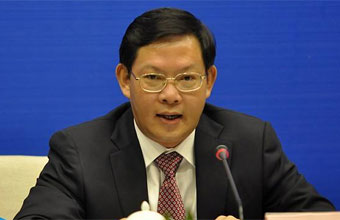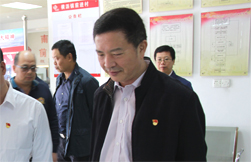Home> News
Zhanjiang tops the province in air quality for Q1
The composite index of the ambient air quality of Zhanjiang in the first quarter of 2020 was 2.46, ranking first in Guangdong province, according to the Zhanjiang bureau of ecology and environment.
The days with excellent or good air quality in the city accounted for 98.9 percent of the first quarter of 2020, up 3.3 percentage points from the same period of 2019. The average particulate matter less than 2.5 microns in diameter (PM2.5) concentration from January to March was 23 micrograms per cubic meter, down 20.7 percent year-on-year.
Zhanjiang has done extensive work to improve its air quality in recent years. It has enticed industrial and agriculture industries to gradually implement atmospheric pollutant discharge limits, achieving a pattern in which the economy and environmental protection are mutually reinforcing.
Key projects in Zhanjiang are required to adopt more advanced pollution control technologies to reduce the amount of pollutants discharged.
For example, the Guangdong Datang Thermal Power Plant project, which was approved by the Guangdong Provincial Development and Reform Commission in January 2015, was required to meet the pollutant emissions limit set in the Emission Standard for the Air Pollutants at Coal Fired Power Plants (GB 13223-2011).
An ultra-low emission standard for thermal power plants was issued during the construction of the project. Finally, the project's sulfur dioxide, nitrogen oxide, and soot emissions were respectively reduced by 2,341.1 tons per year, 1,500.2 tons per year, and 789.5 tons per year.
Zhanjiang also bolstered its control in areas banning fireworks this year. During the Spring Festival, which fell on Jan 25 this year, the city confiscated a total of 3,198 pieces of illegal fireworks, and 67 people were given administrative punishment. From Jan 24 to Jan 30, the ambient air quality of the city was excellent for five days and good for two days.
In addition, measures like prohibiting open-air burning, controlling flowing dust pollution, and cleaning roads have also been taken by the city to improve its air quality. From Feb 6 to March 6, a total of 3,500 road sprinklers were arranged for cleaning roads in the city.
In the future, the city will continue its air pollution prevention and control efforts in the ultra-low emissions retrofitting projects for key enterprises, volatile organic compounds (VOCs), and moving source pollution.
It is expected that particulate matter, sulfur dioxide, and nitrogen oxide emissions will be reduced by 31.7 percent, 56.9 percent, and 85.6 percent respectively after the completion of the ultra-low emissions retrofitting projects for key enterprises.

 Print
Print Mail
Mail 5G construction supports Zhanjiang's high-quality development
5G construction supports Zhanjiang's high-quality development
 Acting mayor inspects project construction in Xuwen, Leizhou
Acting mayor inspects project construction in Xuwen, Leizhou Zhanjiang island an "egret paradise"
Zhanjiang island an "egret paradise"  Dancing egrets add vitality to Xiashan
Dancing egrets add vitality to Xiashan